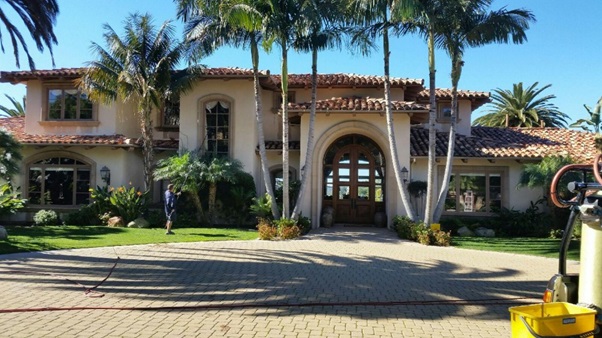A high-rise building poses unique challenges to window cleaning. In addition to the height, you also have to consider the safety of your workers. Cleaning high-rise windows requires taking precautions and following safety procedures. The first step in any window cleaning project is to conduct a thorough risk assessment. It involves evaluating potential hazards and identifying ways to mitigate them. For example, if there are power lines nearby, you may need to use specialized equipment or adjust your approach to avoid contact with electrical currents. Worker safety should be prioritized once potential hazards have been identified. Make sure your workers wear safety hats, harnesses, gloves, and non-slip shoes. As needed, respiratory masks and eye protection should also be worn.
Ladders are commonly used for window cleaning projects but can be dangerous if misused. Verify that your workers are trained on ladder safety techniques like securing the base before climbing up or down. For higher elevations where ladders aren’t an option, scaffolding or suspended platforms may be required. These systems provide a stable work surface but require special training and certification for safe operation. Windy weather can make working at heights even more dangerous by increasing the risk of falls or accidents caused by debris flying around uncontrollably. It may be necessary to postpone work until conditions improve or adjust schedules accordingly. Proper communication between workers is also crucial for maintaining safety during blue diamond window cleaning operations. During an emergency, workers should know what to do and what the company expects. In addition to worker safety, it’s essential to consider anyone else affected by the window cleaning project. It includes pedestrians on the ground level and occupants of nearby buildings.
To avoid injury or damage from falling objects, netting or tarps should be used to contain them. They should also not lean out excessively over the building edge when cleaning windows. Provide maintenance for window cleaning equipment by ensuring it is cared for and inspected regularly. Faulty equipment can lead to accidents or injuries that could have been prevented with routine maintenance and inspections. Some locations may be subject to OSHA regulations. Safe working conditions can only be maintained by complying with these regulations. By providing regular training sessions on safety protocols and procedures, workers can stay informed on best practices and learn how to recognize potential hazards before they become an issue. Technology such as drones or aerial lifts can also improve safety. Worker protection tools allow them to reach hard-to-reach areas without risking injury. In addition, communication between building occupants and window cleaners is critical for safety during cleaning operations. Before starting work, notify building managers or residents of what areas will be cleaned and when. It will enable them to avoid those areas if necessary.

